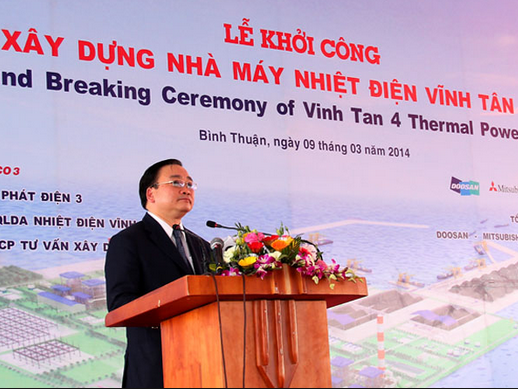Toshiba powering ahead on plant generators

The order was made by Doosan Heavy Industries and Construction Co., Ltd. of Korea and the Mitsubishi Corporation of Japan, who are both members of the consortium awarded the engineering, procurement and construction (EPC) contract for the Vinh Tan 4 thermal power plant. Toshiba will start delivery in 2015 and the first unit of the plant will begin operation in 2017.
The award of the contract is based on Mitsubishi and Doosan’s positive evaluation of the performance and reliability of Toshiba’s supercritical steam turbines and generators in coal-fired thermal plants, including those installed in the Vung Ang 1 thermal power plant in the central province of Ha Tinh and the Thai Binh 2 thermal power plant in the northern province of Thai Binh.
Located in Binh Thuan, some 230 kilometres east of Ho Chi Minh City, the 1,200 megawatt Vinh Tan 4 power project is one of the four designed plants in the 5,600 MW Vinh Tan power centre, which will generate power mostly for the southern central and southern regions.
The 1,244MW Vinh Tan 2 plant, invested in by the state-run Electricity of Vietnam (EVN), started generating power in March of this year. Meanwhile, the 1,200MW Vinh Tan 1 plant, invested in by China’s Southern Power Grid, China Power International Development Ltd. Co. and the state-run Vinacomin, is expected to complete construction in 2018.
The construction of Vinh Tan 4, which received investment by EVN to the tune of $1.7 billion, and with Doosan, Mitsubishi Corporation, and the domestic Pacific Ocean Engineering JSC and Power Engineering and Consulting 2 JSC as main contractors, started in March this year. Once completed and fully operational by 2018, this power plant is projected to contribute about 7.2 billion kWh per year to the national grid.
Founded in Tokyo in 1875, today’s Toshiba, a Fortune Global 500 company, is at the heart of a global network of over 590 consolidated companies employing over 200,000 people worldwide, with annual sales surpassing $63 billion.
It channels world-class capabilities in advanced electronic and electrical products and systems into five strategic business domains – energy and infrastructure, community solutions, healthcare systems and services, electronic devices and components, as well as lifestyles products and services.
What the stars mean:
★ Poor ★ ★ Promising ★★★ Good ★★★★ Very good ★★★★★ Exceptional
Latest News
More News
- Ericsson a trusted partner in the digital economy (December 03, 2025 | 10:33)
- 5G and AI to shape next phase of digital economy (December 03, 2025 | 10:25)
- Fly to Con Dao from 0 VND with Vietjet mega promotion (December 02, 2025 | 16:50)
- Tien Phong strives for a greener plastics industry (December 02, 2025 | 09:22)
- Czech enterprises strengthen presence (December 01, 2025 | 18:00)
- New phase launched to support women-led ventures (December 01, 2025 | 15:08)
- Airlines race to patch Airbus A320/A321 fleets (December 01, 2025 | 09:17)
- European expertise to boost Vietnam’s sustainable logistics push (November 29, 2025 | 10:00)
- AkzoNobel: from painting walls to painting the future (November 28, 2025 | 13:31)
- Tien Phong Plastic ready for a new growth cycle (November 28, 2025 | 10:56)

















 Mobile Version
Mobile Version